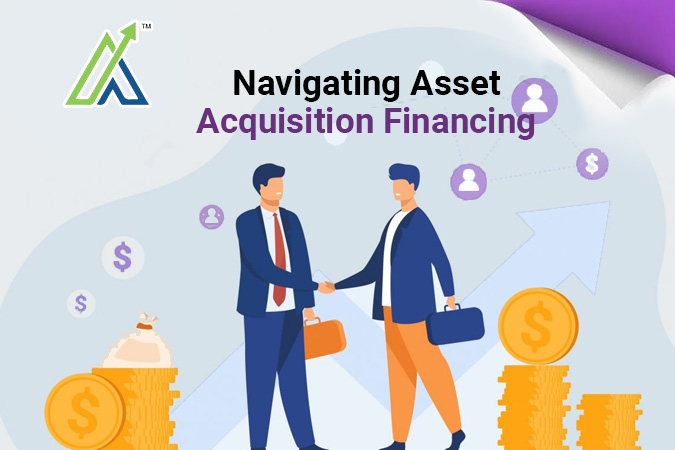When it’s time to buy assets for your business, picking the right way to pay is key. Cash, loans, leasing, or vendor financing—each has its perks and pitfalls. Knowing these can help you decide what’s best for your business.
Different Financing options for Asset Acquisition
Here are some options that leads to financing for asset acquisition –
Cash Purchases
Paying cash is the simplest way. You own the asset right away, no interest, no extra costs. It’s yours, free and clear. No monthly payments mean better cash flow down the line.
Pros and Cons:
Pros: Full ownership, no interest, better long-term cash flow.
Cons: Big upfront cost, drains your cash reserves, you can’t use that money elsewhere.
Using cash works if you’ve got plenty of it and don’t need to hold onto it for other things. But think about if spending all that cash now will leave you strapped later.
Loans
Loans are classic. You borrow money, buy the asset, and pay it back over time with interest. This spreads out the cost and keeps your cash reserve healthy.
Pros and Cons:
Pros: Keeps your cash, spreads cost, possible tax breaks from interest.
Cons: Interest costs, more debt, might need collateral.
Loans are great if you want to keep cash handy for other uses. Just watch out for too much debt and those pesky interest payments.
Leasing
Leasing means you pay to use an asset for a set time without owning it. There are two types: operating leases (short-term, like renting) and finance leases (long-term, more like a loan).
Pros and Cons:
Pros: Low upfront costs, tax benefits, easy to upgrade.
Cons: No ownership, ongoing payments, might cost more in the long run.
Leasing is good if you need the latest gear but don’t want to buy. Just remember, over time, leasing might end up costing you more.
Vendor Financing
Vendor financing is when the seller helps you pay for the asset. It’s like a built-in loan or payment plan from the seller. This makes buying simpler.
Pros and Cons:
Pros: Easier process, possibly good terms, saves your cash.
Cons: Less room to negotiate, might be higher interest, stuck with the vendor’s terms.
Vendor financing can be a sweet deal if you’ve got a good relationship with the seller. Just make sure the terms are good and not more expensive than other options.
Picking the Right Option
Choosing the best way to pay depends on your business’s money situation and goals. Here’s what to think about:
Cash Flow Impact: How will each option affect your cash now and later? Loans and leases spread out the cost, which helps keep cash handy.
Cost of Capital: Look at the total cost for each option- interest, fees, and taxes.
Asset Management: Decide if owning or leasing fits your strategy. If tech changes fast in your field, leasing might be better.
Debt Levels: Watch your debt. Too much can hurt your stability and credit.
Questions to understand your ability
- What is a key downside of paying cash for an asset?
- Improved long-term cash flow
- Significant upfront capital required
- No interest costs
- Full ownership
- How does leasing benefit a business in terms of asset acquisition?
- Provides full ownership
- Has no ongoing payment obligations
- Offers lower upfront costs and flexibility to upgrade
- Eliminates long-term costs
- Which financing option involves the seller providing the financing to the buyer?
- Cash Purchase
- Loan
- Leasing
- Vendor Financing
- What is a major concern when taking out loans to finance an asset?
- No need for collateral
- Spreading the cost over time
- Potential interest costs and increased debt
- Immediate ownership
- Why is it important to consider cash flow impact when choosing a financing option?
- It helps improve long-term sustainability
- It eliminates the need for loans
- It ensures you have enough cash for other uses
- It allows for full ownership immediately
Conclusion
In short, knowing the ins and outs of each financing option helps you make smart choices. Cash, loans, leasing, or vendor financing – all have their own benefits and drawbacks. By weighing your business needs and finances, you can pick the one that suits you best.

